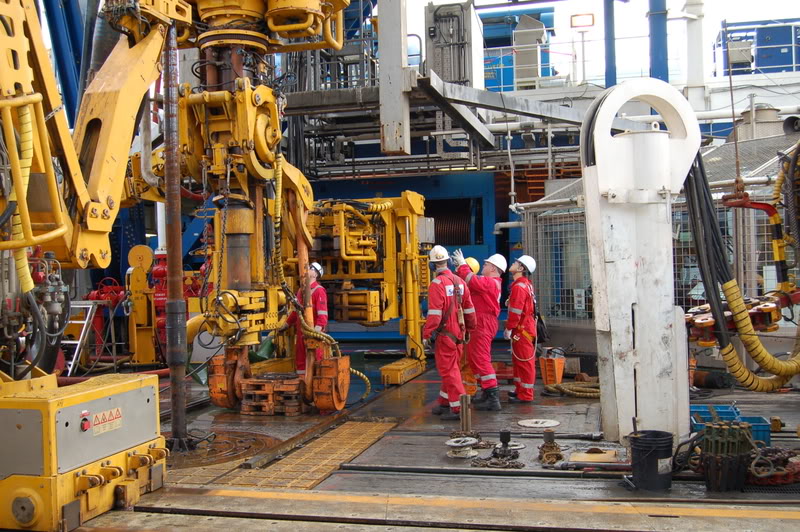The robot on an oil drillship in the Gulf of Mexico made it easier for Mark Rodgers to do his job stringing together heavy, dirty pipes. And it eventually cost him his job.
The robot, named Iron Roughneck, made by Texas-based National Oilwell Varco Inc., automates the repetitive and dangerous task of connecting hundreds of segments of drill pipe as they are shoved through hundreds of meters of ocean water and oil-bearing rock.
The machine has cut three jobs, including Rodgers', who took a job repairing appliances after being laid off from Transocean Ltd, Bloomberg reported.
“I would love to go back offshore,” he says. But the odds are against him. As the global oil industry begins to climb out of a collapse that took 440,000 jobs, anywhere from a third to half may never come back.
A combination of more efficient drilling rigs and increased automation is reducing the need for field hands. And therein lies a warning to US President Donald Trump, who has predicted a flood of new energy-sector jobs under his watch.
Automation has revolutionized many industries, from auto manufacturing to food and clothing makers. Energy companies, which rely on large, complex equipment for drilling and maintaining oil wells, are particularly well-positioned to benefit, says Dennis Yang, chief executive officer of Udemy, a company in San Francisco that trains workers whose careers were derailed by advanced machinery.
“It used to be you who had a toolbox full of wrenches and tubing benders,” says Donald McLain, chairman of the industrial-programs department at Victoria College in south Texas. “Now your main tool is a laptop.” McLain, who worked as a rig hand for 25 years, is helping to retrain laid-off oil workers for more technical jobs.
During the boom, companies were too busy pumping oil and gas to worry about head count, says James West, an analyst at investment bank Evercore ISI.
“We got fat and bloated.” He says the two-and-a-half-year downturn gave executives time to rethink the mix of human labor and automated machinery in the oilfields.
Still, in the current political climate, they are proceeding cautiously. More robotic drilling ultimately means lower labor costs and fewer workers near some of the most dangerous tasks. But oil companies probably will frame their cost-cutting technologies simply as a way to be more competitive around the world, says West.


